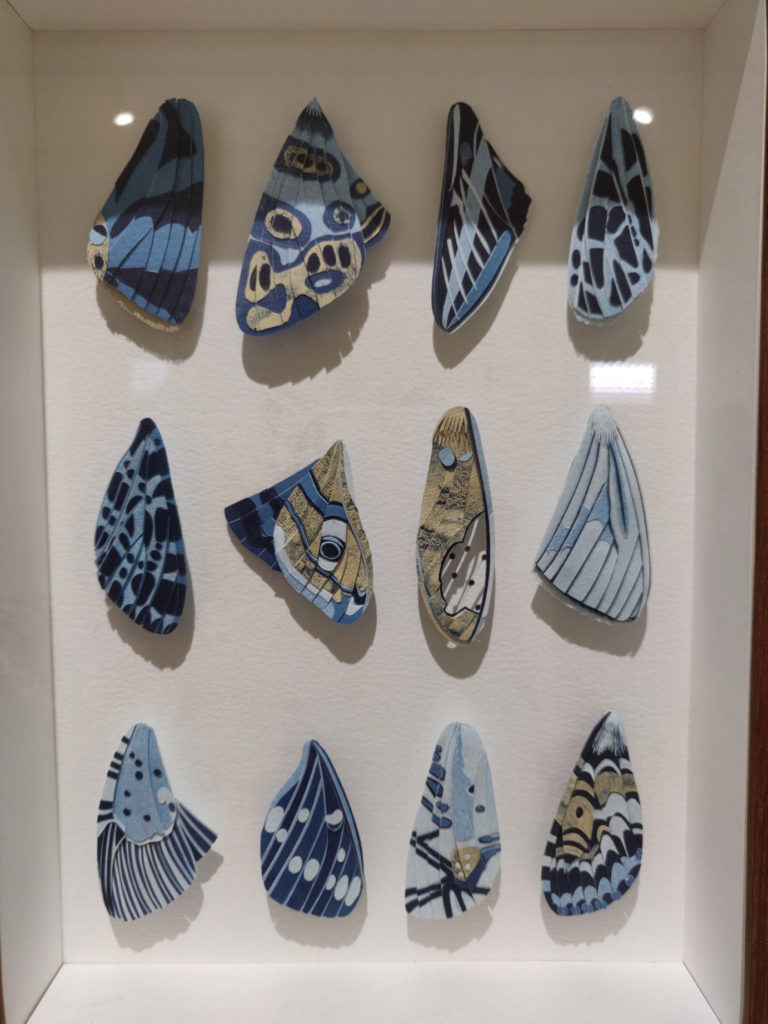The beautiful galleries of the Kasturbhai Lalbhai Museum in Ahmedabad have been dedicated to ‘Alchemy : Explorations in Indigo’. The Lalbhai family has been working to bring the depths of indigo to the forefront. They plan to open a Museum at their Arvind Mills campus in Naroda called the Arvind Indigo Museum.

Panels with information on the relevance of Indigo in world history 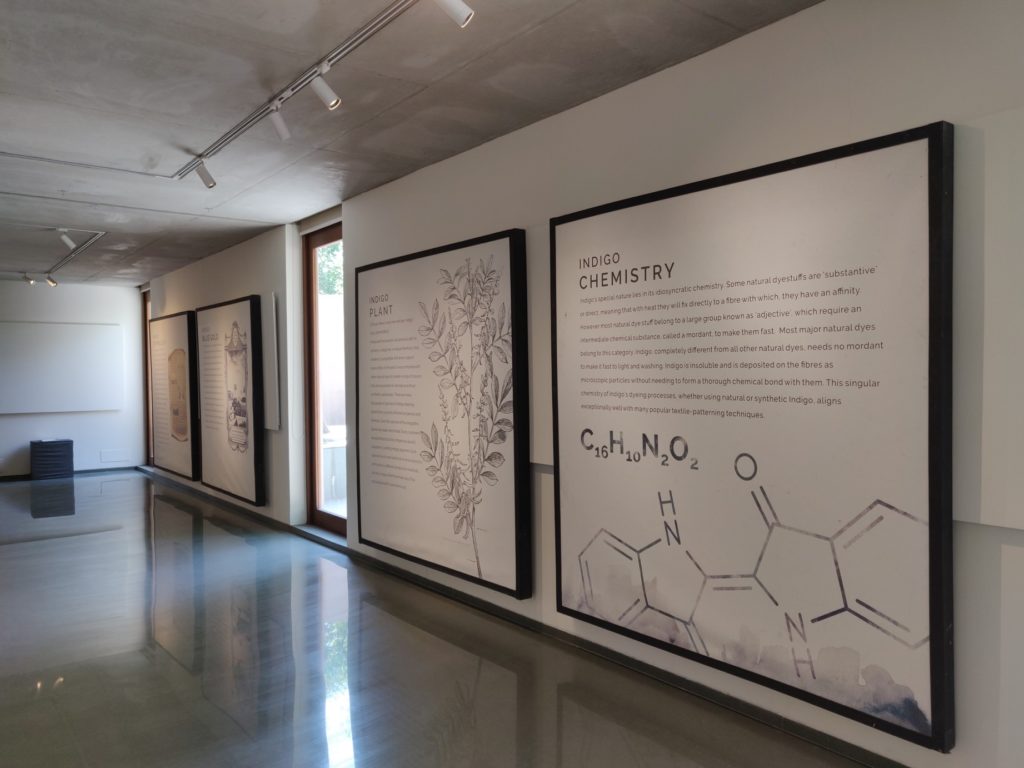
Panels providing details on the indigo compound and the process of dyeing.
Earlier this summer, a few friends and I visited ‘Alchemy’ at the Kasturbhai Lalbhai Museum in Ahmedabad. ‘Alchemy’ celebrates the soulful rich indigo colour by showcasing the versatility and the immense potential of indigo.
Several artists across the world have been commissioned to create works ranging from weaves, furniture, paintings, sculptures and installations, all using indigo. The works of art expand across various mediums – wood, steel, ceramics, rubber, canvas, paper etc.
Here’s some of my favourite experiences at the exhibit:
We were first greeted by the ‘Divine Sky’ by Aboubakar Fofana.
The exhibit didn’t have much information about this.
Here’s what he says on his Instagram post :
“This piece is called Divine Sky, and it has been installed under the porch of this amazing colonial house, slightly exposed to the breezes, and the animation that this brings to the piece is a beautiful interaction. The panels in this work contain all the twelve shades of indigo, from the lightest – “Baga fu” – ‘blue of nothingness’, to the darkest shade which translates from the Bamanan-kan “Lomassa dunné” as ‘Profound divine sky’. In Malian tradition, an accomplished indigo dyer was required to make these twelve shades, and there are stories that an indigo dyer would ask their client to arrive at the time of day when the sky showed the shade of blue that they wanted their cloth to be dyed.” @aboubakarfofana

There were some stunning sandstone structures that were dyed with the hues of Indigo by artist Kavin Mehta.
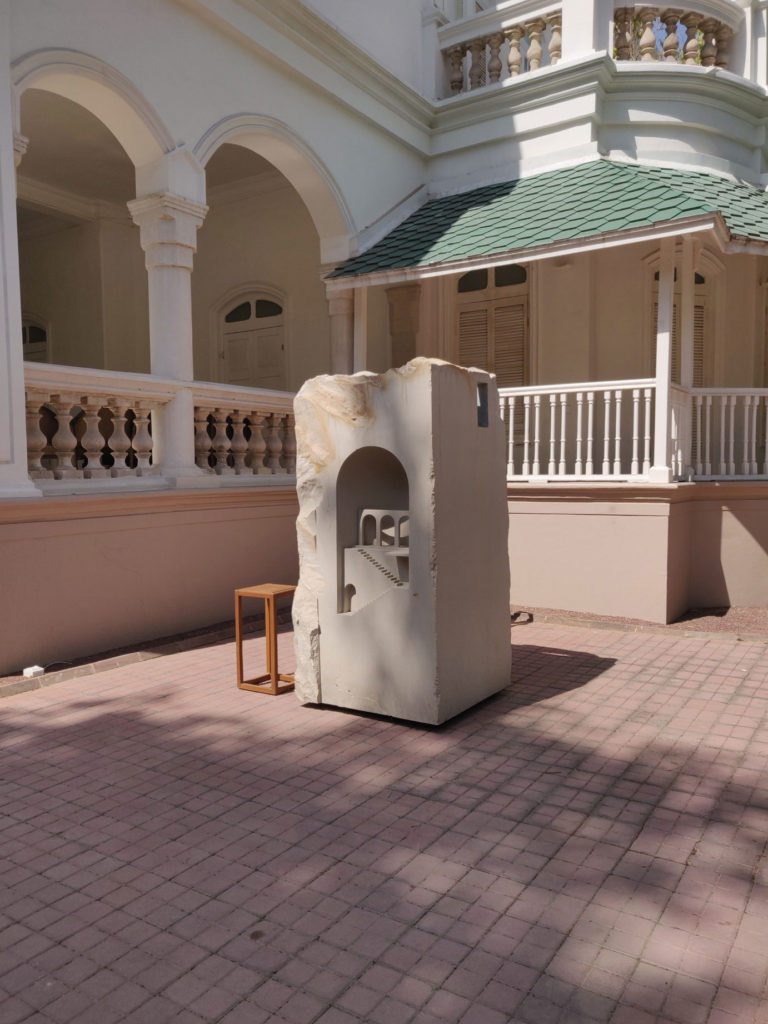
One sculpture from a set called ‘Inside’ by Kavin Mehta 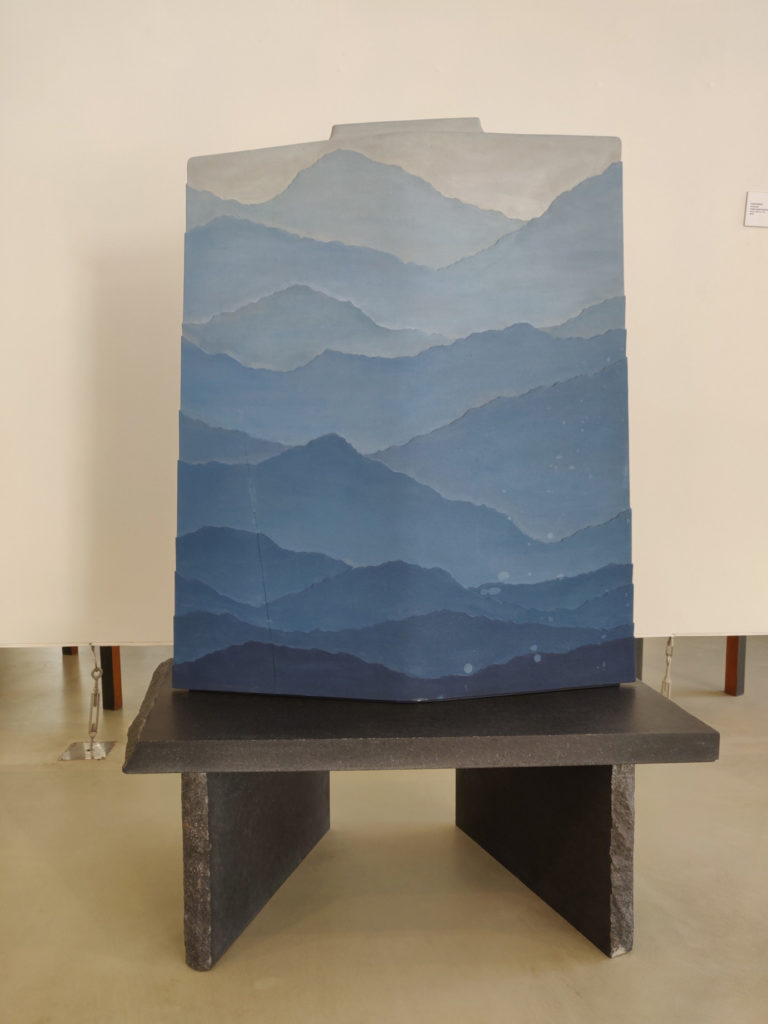
‘Container’ by Kavin Mehta
Nibha Sikander’s paper cut work of kingfisher, bugs, moths and beetles is definitely a testament her of skill and patience. The papers are dyed with Indigo, cut and assembled to create these almost life-like forms.

There was another installation by Aboubakar Fofana of different shades of indigo yarn stretched like a warp. I gathered more from his page:
“This piece is called “Fa Juru”, which simply means ‘warp’ in Bamanan-kan. The warp of a textile is like the spine, and in Bamanan culture the name is deeply symbolic, and is a masculine word, whilst the name for the weft is feminine and the name for the yarn or thread is the same as the word for ‘umbilical cord’. Malians believe that woven cloth is sacred and reflects the way the universe is woven together, with the male and female principles of every thing within merging together to create all that exists; and on a human level, of the way that societies are also woven together.” @aboubakarfofana
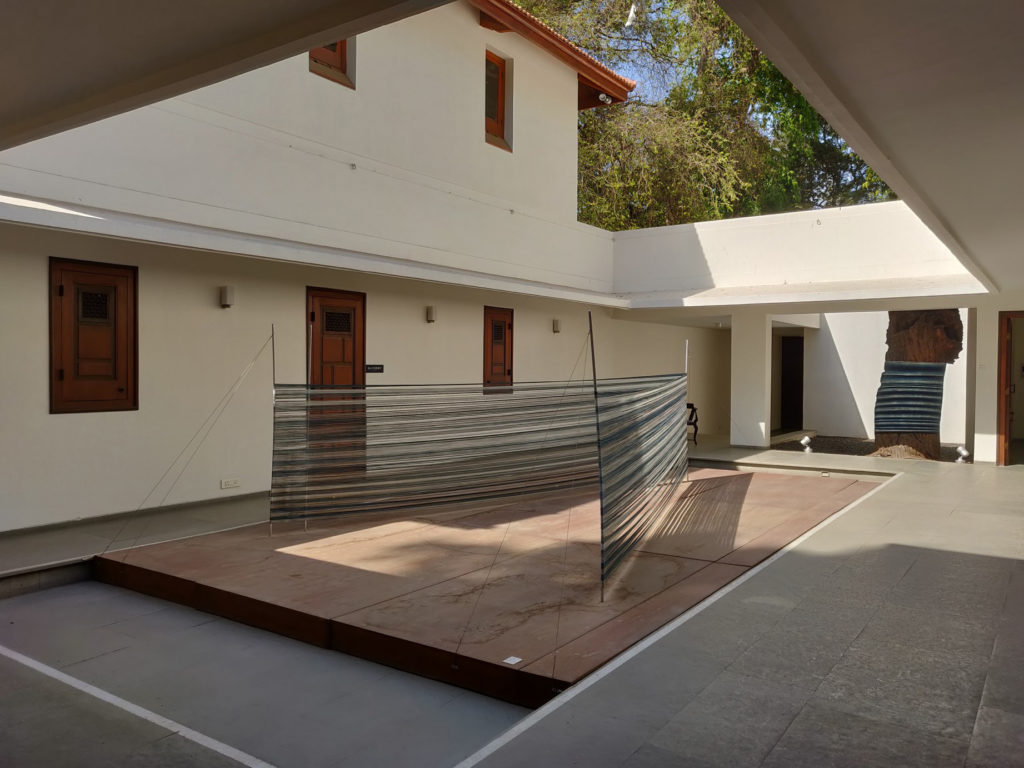
Shihoko Fukumoto’s piece was a linen fabric with gradient dyed indigo in layers. The piece is aptly named ‘Time & Space’, when you walk past it the stationary installation creates a movement.
And of course, an exhibition on Indigo in Ahmedabad would be incomplete without the ‘Mata Ni Pachedi’ and the Ashavalli brocade made by the skilled artisans.

Some others included indigo in resin, an indigo patina on brass, Indigo on concrete, indigo works inspired by the waves and water. Here are some photos from the exhibit.
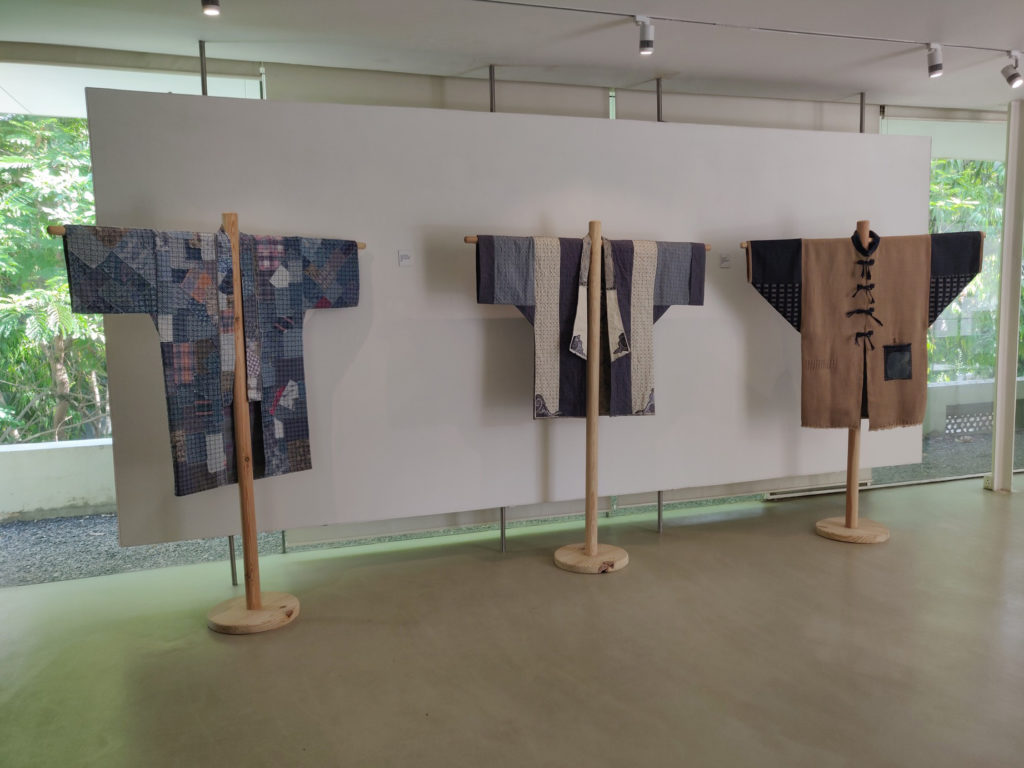
Kimono, the fabric of life – by Vipul Mahadevia. 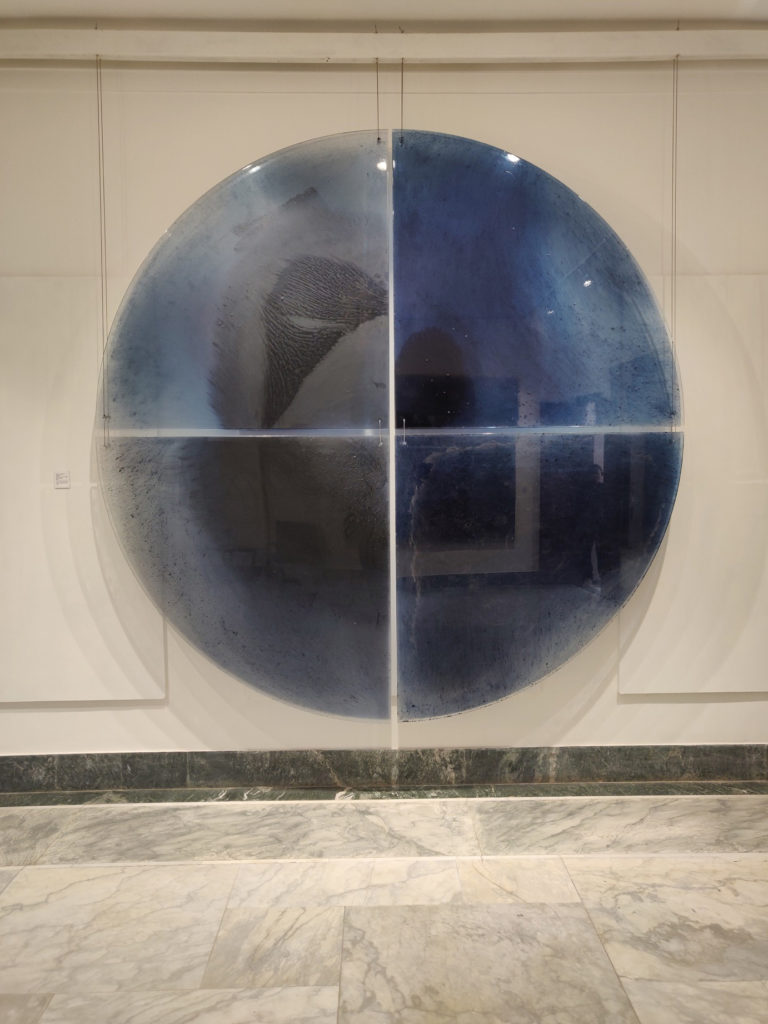
‘Essence’ by Shola Carletti. Indigo + resin on acrylic 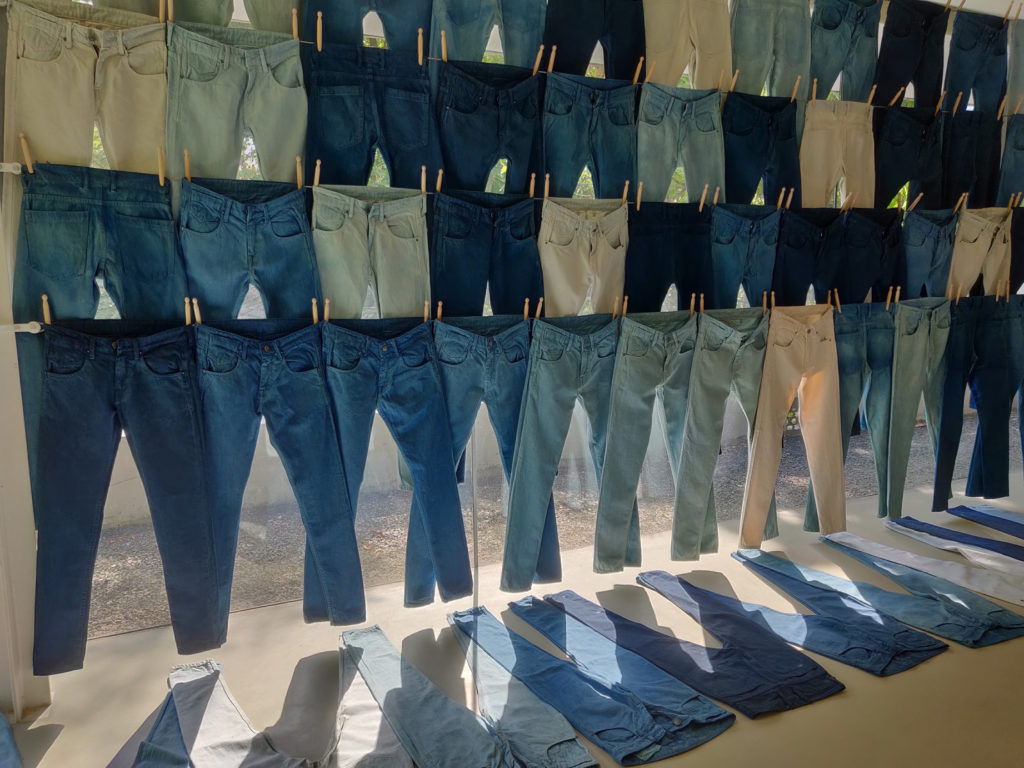
Indigo denims – Arvind Ltd brought denim production to India in the 1950s. 
Zardosi embroidery using beetle wings and indigo dyed silk yarn by Asif Shaikh 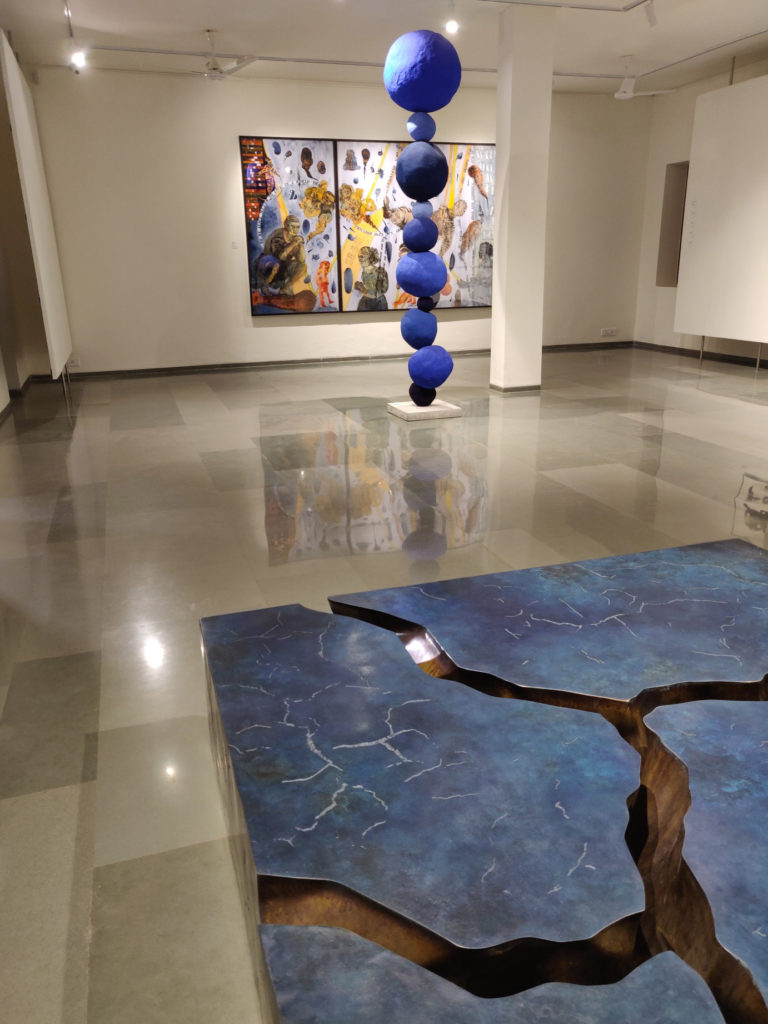
Painting: ‘The Teller of Tales’ by Nalini Malini.
An installation by Annie Morris
Indigo Fragmented Crack by ‘Based Upon’
It was truly fascinating to see indigo pushing boundaries into a variety of material and forms!
